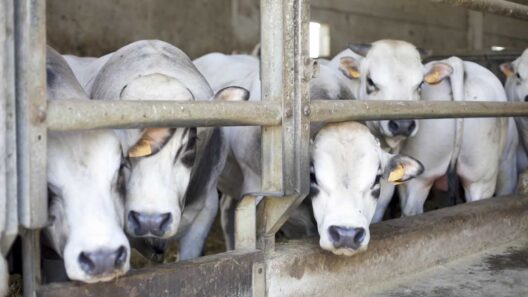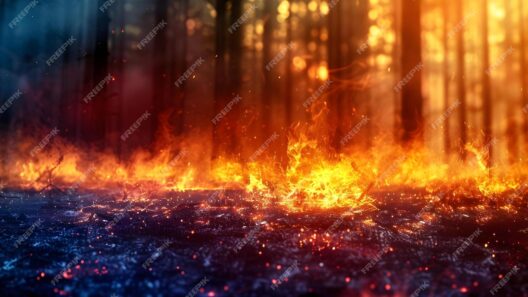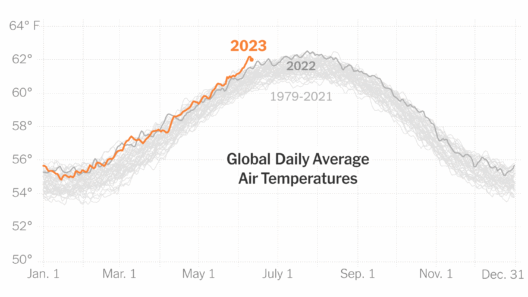House fires might seem like isolated incidents that primarily affect homeowners and local firefighters. However, they carry hidden costs that reverberate far beyond the charred wreckage of a once cozy abode. The climate impact of burning homes is a topic often overshadowed by immediate concerns of property loss, personal safety, and community disruption. Yet, examining this issue reveals an alarming interplay between house fires and the broader environmental crisis we all face.
The destruction of a home is more than just a loss of structure; it’s an event that catalyzes a series of ecological repercussions. When a house burns, not only are the physical materials consumed, but an array of toxic substances is also released into the atmosphere. Common household materials such as plastics, paints, and treated woods emit harmful chemicals—carbon dioxide, particulate matter, and volatile organic compounds—during combustion. These emissions contribute to air pollution, which has profound implications for both public health and climate change.
It’s essential to grasp the concept of ‘carbon footprint’ in this context. A single house fire can release an astonishing amount of carbon into the atmosphere. To put this into perspective, the average home emits approximately 20 tons of carbon dioxide through a complete burn. This staggering figure underscores the hidden costs associated with housing fires. With thousands of homes catching fire each year, the cumulative carbon emissions paint a grim picture of the house fire as an overlooked contributor to climate change.
Another critical aspect of the climate impact arises from the aftermath of a fire. The rebuilding process can be equally environmentally taxing. Often, homeowners replace their burnt materials with new ones that carry their own environmental costs. The manufacturing processes for drywall, insulation, and lumber contribute significantly to greenhouse gas emissions. Furthermore, the rush to rebuild can lead to the use of unsustainable materials and practices, perpetuating a cycle of ecological degradation.
Moreover, rebuilding in areas that have previously burned can lead to a perilous pattern known as urban sprawl. As communities expand into vulnerable areas, the risk of future fires increases, creating a feedback loop that exacerbates the situation. Wildfires, spurred by climate change, can ignite structures that were hastily rebuilt, leading to further emissions and environmental destabilization.
The water used to combat house fires also adds a layer of complexity to the environmental equation. Firefighting uses significant amounts of water, which can strain local water supplies and ecosystems. The introduction of chemicals from firefighting foam and equipment can contaminate nearby water sources, harming aquatic life and posing health risks to communities. This intersection of water usage and chemicals further complicates the environmental landscape surrounding house fires.
Additionally, consider the socio-economic dimensions of house fires. Disadvantaged communities often bear the brunt of these disasters. As climate change continues to exacerbate the frequency of extreme weather events, the risk and occurrence of house fires are projected to rise, particularly in marginalized areas. The financial burden of recovery can lead to displacement and social inequality, making it imperative to consider how such environmental challenges disproportionately impact specific populations.
Then, there is the issue of insurance and its ripple effects on the economy and environment. Insurance companies often encourage rebuilding with modern techniques and materials that prioritize quick restoration over sustainability. This can lead to the perpetuation of a cycle where environmentally harmful building practices become the norm. Understanding how insurers assess risk and promote certain rebuilding methods can foster a systemic shift towards greener alternatives.
As we contemplate solutions, the need for a paradigm shift in how we perceive house fires becomes clear. Public awareness campaigns can educate homeowners about fire prevention strategies that reduce risk and emissions. Innovations in fire-resistant building materials can also mitigate these hidden environmental costs. For example, materials that are both fire-retardant and eco-friendly offer exciting pathways towards sustainable residential construction. Technologies that recycle building materials can also play a role, ensuring that those materials do not contribute to further resource depletion or greenhouse gas emissions.
Furthermore, integrating green infrastructure and better urban planning can reduce fire risks while enhancing community resilience. Establishing firebreaks, utilizing drought-resistant landscaping, and designing communities with the natural landscape in mind can mitigate the risk of future fires. When communities band together to develop strategic fire prevention measures, the collective effort fosters a more sustainable interaction with our environment.
In conclusion, the impact of house fires extends far beyond their immediate destruction. The hidden costs associated with burning homes call for a paradigm shift in perspective—one that recognizes the intricate relationships between housing, environmental health, and climate change. By fostering awareness and implementing sustainable practices, society can work towards a future where homes are not only safe but also contribute positively to our planet’s health. Embracing this holistic approach opens avenues for solutions that not only protect our communities but also mitigate our impact on the delicate balance of Earth’s ecosystems.






